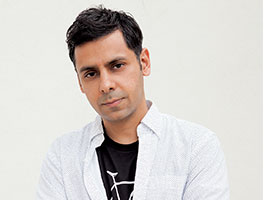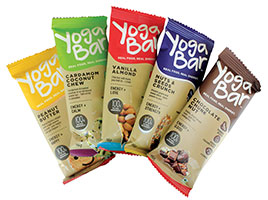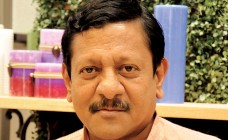Precise packaging must have an impact, authenticity, consistency and global appeal
By Nabamita Chatterjee | December 15, 2017
Lucid is a Bangalore based design company that has been pioneering packaging design based on their international understanding, experience and attention to detail. Amit Mirchandani, Design Director, Lucid Design India Pvt. Ltd. chats up with Point-of-Purchase and shares how they help brands succeed by using form, type, color & materials to weave together singular and unique stories.
 How does packaging of any FMCG product helps in designing the brand’s in-store promotions and communications?
How does packaging of any FMCG product helps in designing the brand’s in-store promotions and communications?
If you break down what an FMCG brand does, then in one word it delivers delight! For a brand to successfully become a part of a consumer’s life, it needs to delight them on every level. The packaging is often the first introduction of a brand to the consumer, and is therefore critical in communicating not just what the value of the product is, but also what the brand represents and how they intend to do things differently. The communication materials and/or in store promotions are an extension of that message. And it too needs to reinforce the value and expectation that the brand has set. It is important to make sure that every asset of the brand is telling the same story or some part of the same story.
 What are the key factors you keep in mind while designing product packaging solutions? Tell us briefly about the key wins of Lucid Design in this regard.
What are the key factors you keep in mind while designing product packaging solutions? Tell us briefly about the key wins of Lucid Design in this regard.
My key factors would be impact, authenticity, consistency and global appeal.
For Impact, take the case of Yogabar, where we developed a new identity and the packaging for the snack bar line. The design was fun, modern and dramatic with what looked like brown paper dipped in a vat of vivid colour on the top and bottom. The design has great shelf appeal and the product range looks extremely eye-catching even from a distance. Without impact, you’re not going to capture anyone’s attention. For authenticity, we can look at Disano. Here we created everything from the name to the identity and packaging. The company manufactures in Italy but only sells in India in price sensitive outlets. So we created a name that means “of health” in Italian, and a design for the packaging that is contemporary and honest. What we did not wanted to do is create a false sense of history which would not have been authentic. Without authenticity, you’re not going to gain anyone’s trust.
It is also important to be consistent, especially if there are line extensions and sub-categories under an umbrella offering. For Britannia, we created the identity and packaging for Healthy Start, a warm breakfast offering. Here there was a classic line, a savory line and a sweet line. We ensured that all the packaging was individually unique, but still recognisable as part of being in the healthy start line.
Lastly, I believe the greatest achievement of any packaging (or design otherwise), is to transcend any geographic limitation and connect with a global audience. I believe, that without global appeal, your packaging will never reach a new audience.
We see that the design for ATL and the BTL is replicated and they are used to create a 360 degree recall value, do you think this approach is going to help the brands break the clutter at the store level?
Consistent communication no matter if it is ATL or BTL will help to create one strong brand, with clearly defined values, strong recall, and one that consumers want to make their own. I say ‘make their own’ because I see that as the goal for any brand: where the consumer does not choose to be skeptical and uncommitted to that brand, but rather one that the customer wants to be a part of and ultimately evangelize. The challenge here is getting the communication down to the “smallest sentence” so to speak, and present it tightly and with conviction.
What is your plan for Lucid Design to take it to the next level?
At Lucid, we would like to drive innovation and cutting edge graphics, and as the market matures and retail experiences evolve, we would like to work more with likeminded brands to make big ideas come to market.
Related Viewpoints
Praphul Misra
Founder and MD, Oi Media
‘There's a plethora of data available today, the challenge is how to use & structure it’









Comments